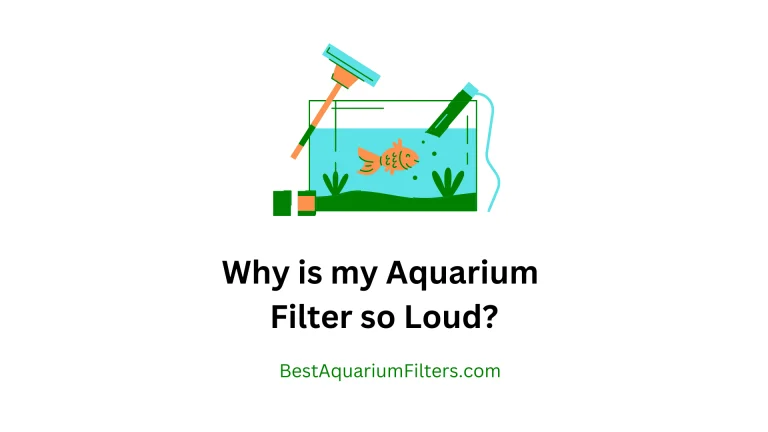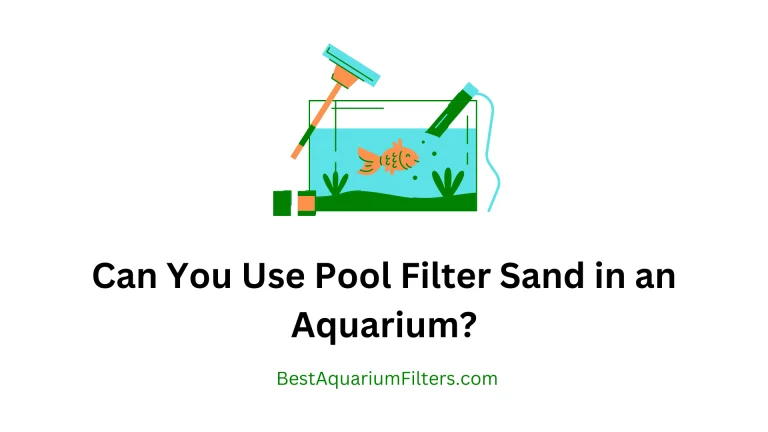3 Types of Aquarium Filters – A Detailed Guide
As fish owners, we always want our fish to stay healthy and happy. One important thing for their well-being is choosing the right filter for their aquarium. Filters keep the water clean and safe for our fish friends. There are different types of aquarium filters available, each with its own benefits.
In this article, we’ll talk about 3 types of aquarium filtration and how they help keep our aquariums clean and our fish healthy.
Importance of aquarium filters
Before we talk about the different types of aquarium filters, let’s understand why they are so important. Aquarium filters are like cleaning machines for fish tanks. They help keep the water clean and safe for the fish and plants living inside.
Without filters, bad stuff like ammonia and waste can build up in the water and make the fish sick. Filters also help remove extra food and other yucky things, keeping the water healthy for everyone. So, having a good filter is crucial for a happy and thriving aquarium!
Types of Aquarium Filters
There are three main types of aquarium filters, and each one does a different job of keeping the water clean and safe for your fish. Let’s take a closer look at these types:
1- Mechanical Filters
Mechanical filters are made to take out solid stuff and dirt from the fish tank water. They do this by catching particles when water flows through materials like sponges, floss, or filter pads. These caught particles can be things like leftover fish food, fish poop, plant pieces, and other floating bits.
Types of mechanical filters include:
Sponge Filters:
Sponge filters are basic but work well in fish tanks. They’re made of sponge material that catches dirt and waste when water goes through it. Air pumps or powerheads pull water through the sponge, where good bacteria live, and help get rid of bad stuff like ammonia and nitrites.
Canister Filters:
Canister filters are filters that sit outside the aquarium and have a canister with different trays inside. Water gets pushed into the canister and goes through various types of media, such as sponges for cleaning, biological media, such as ceramic rings or bio-balls, for good bacteria, and chemical media, such as activated carbon or phosphate remover. The clean water is then sent back into the tank.
Hang-On-Back (HOB) Filters:
HOB (Hang-On-Back) filters are made to hang on the edge of the aquarium, with a tube or pipe that goes into the water. They usually have a pad or cartridge for cleaning, a place for good bacteria to grow, and sometimes a spot for chemicals. Water is sucked up through the tube, goes through the filters, and then goes back into the tank.
2- Chemical Filters
Chemical aquarium filters are special filters for fish tanks. They work by removing dissolved impurities and chemicals from the water. Unlike filters that mainly clean dirt and solid stuff, these filters focus on things like dissolved organic compounds, heavy metals, and medicines that can’t be removed just by cleaning.
Types of chemical filters include:
Activated Carbon Filters: Activated carbon filters use a very porous material called activated carbon. This material can soak up dissolved organic compounds, bad smells, and some chemicals. It’s useful for making water clearer and getting rid of specific toxins.
Ion Exchange Resins: Ion exchange resins are substances that swap ions in the water. They focus on things like ammonia, nitrate, phosphate, and heavy metals, helping to remove these substances from the water in fish tanks.
Zeolite Filters: Zeolite is a natural mineral that can adsorb ammonia and some heavy metals.
Chemical filters are often used with mechanical and biological filtration systems to create a comprehensive water treatment setup.
3- Biological Filters
Biological filters use helpful bacteria to break down waste and bad stuff in fish tanks. These bacteria live on filter materials and other tank surfaces, creating a biological filter or biofilter. They change harmful substances into less harmful forms.
Types of biological filters include:
Bio-Wheel Filters:
Bio-Wheel filters are designed with a rotating wheel or cylinder where good bacteria can thrive. When the wheel spins, it brings the bacteria in contact with oxygenated water, which helps them work better in breaking down waste and harmful substances.
Fluidized Bed Filters:
Fluidized bed filters work by having a bed of media that’s constantly agitated, keeping the water moving. This movement helps aerobic bacteria grow, and these bacteria are good at breaking down waste in fish tanks.
Undergravel Filters:
Undergravel filter is installed under the gravel in the aquarium, giving a big area for bacteria to grow. Water flows through the gravel, letting bacteria break down waste.
Overall, it’s usually best to use a mix of mechanical, chemical, and biological filters to keep an aquarium healthy and balanced. Each type of filter has an important job in keeping the water clean, clear, and safe for fish and other aquatic creatures.
Conclusion
This article talked about different types of aquarium filters. Filters are important because they keep the water clean and safe for fish and plants. There are three main types of filters: mechanical, chemical, and biological.






